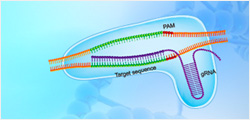Integrin alpha 2B beta 3 (ITGA2B&ITGB3) Heterodimer, His, Mouse
Glanzmann thrombasthenia (GT) is characterized by mucocutaneous bleeding due to platelets that fail to aggregate in response to physiologic stimuli. GT, a rare inherited disease, is caused by quantitative or qualitative deficiencies of αIIbβ3, an integrin receptor for adhesive proteins. Coded by the ITGA2B and ITGB3 genes, αIIbβ3 mediates platelet-to-platelet attachment, aggregation and clot retraction.
| ¥4100 | |
| Z06222-100 | |
|
|
|
|
|
|
|
|
|




































